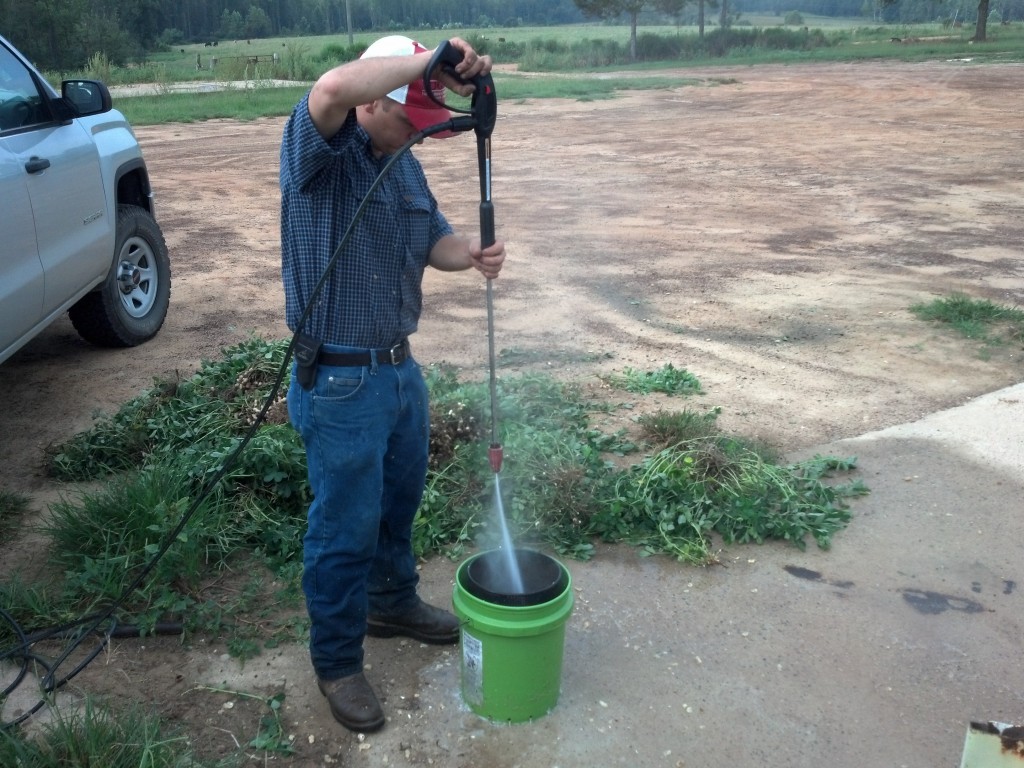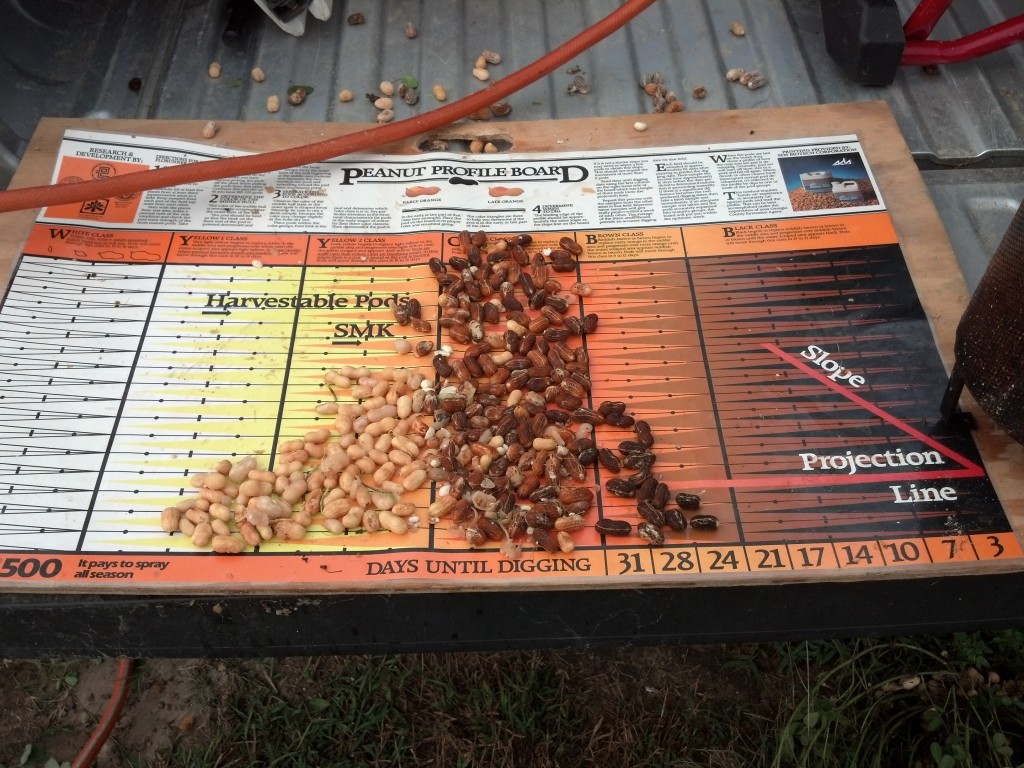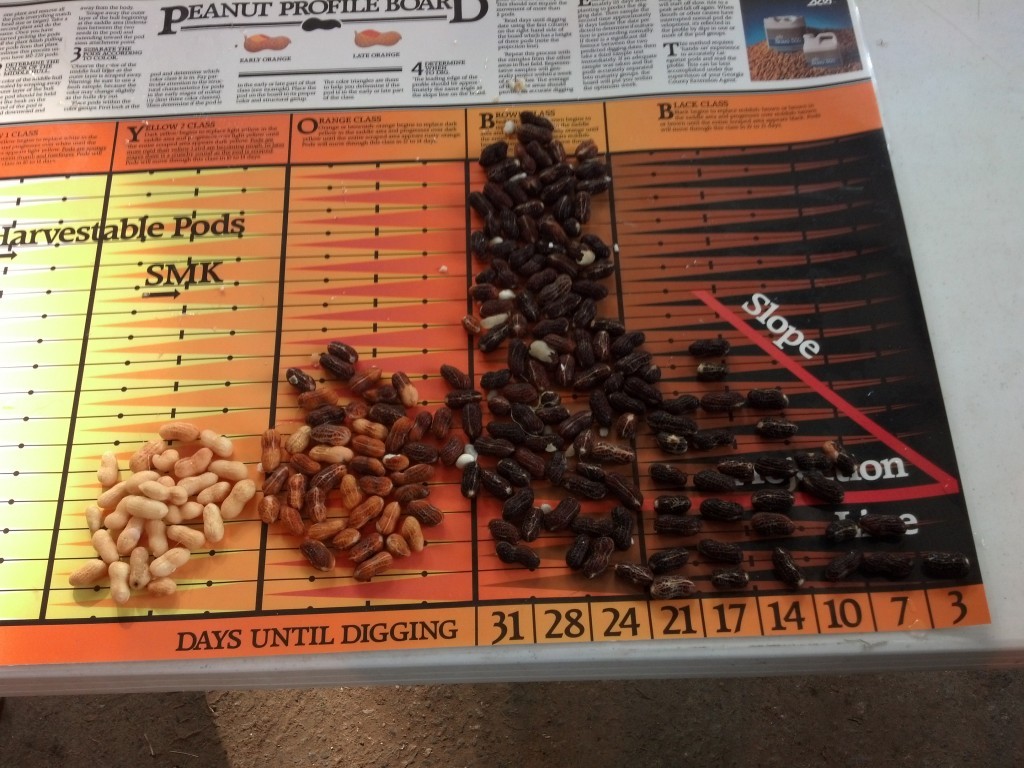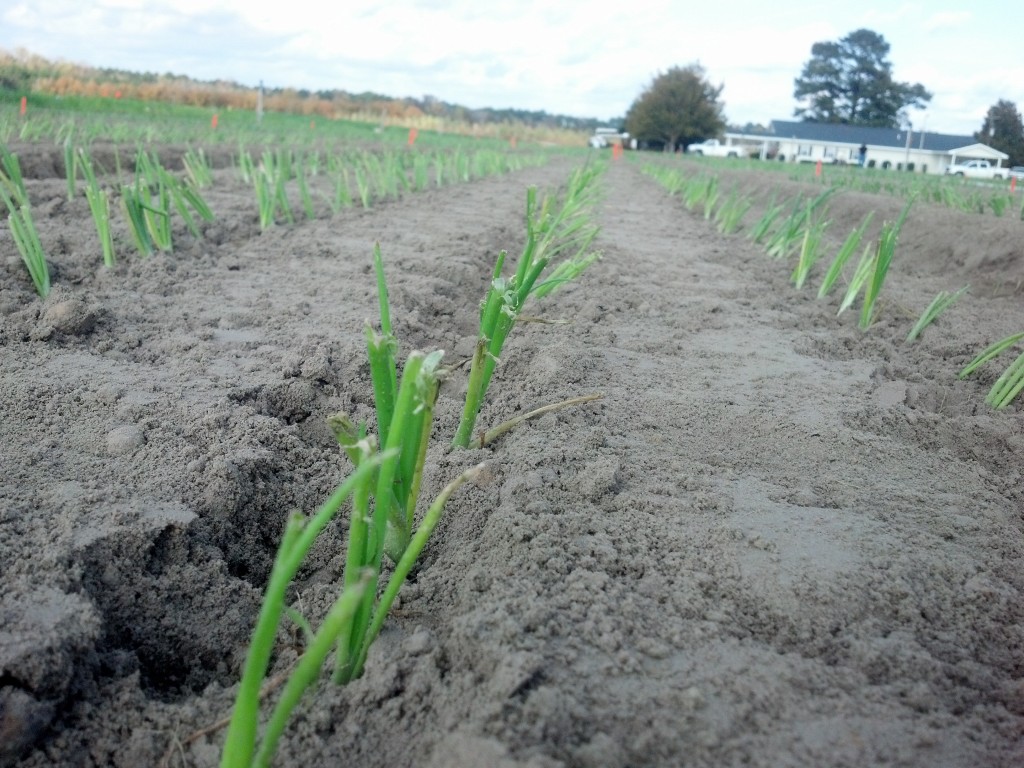
We have been pod blasting and checking a lot of peanuts in the last couple of weeks. Very few folks in our area have started digging, but it should pick up a good bit in the next 2 weeks. Many of the peanuts around Tattnall County were planted in the 2nd and 3rd weeks of May, and they are between 125 and 140 days old. Some that we have been monitoring seem to be maturing normally, however, some peanuts will need more than 145 days to reach their maximum maturity, especially dryland peanuts. See the pictures below of 2 samples we recently scraped. Each one of these samples was about 130 days old. One was almost ready to dig, while the other needs a good 3 weeks or so. This just goes to show that you can’t always go by a calendar date to dig peanuts.


Fungicide sprays – One question that we get asked a lot this time of year as peanuts are maturing is “How long do I have to keep spraying them?” or “I’m probably going to dig in 2 or 3 weeks. Should I spray one last time?” Sometimes this can be a tough question to answer, but usually if you are within 2 weeks of digging you can stop spraying fungicide. However, if you have longer than that, you may very well need to keep spraying. Here’s what Bob Kemerait, UGA Extension Peanut Disease Specialist, has to say about that:
“The 2015 season has been very favorable for white mold and many growers have wisely continued to protect their crop from this disease beyond the traditional window between 60 and 105 days after planting. However, cooler temperatures anticipated as we head into September should help to slow white mold. Any grower who has four weeks or more to go until harvest, except those at low risk based upon Peanut Rx, should maintain a fungicide program at least for leaf spot diseases and perhaps for white mold. Growers with three weeks to go until harvest and without a disease problem (white mold, leaf spot or other) can likely suspend their program unless a tropical storm or other system threatens that might delay harvest. Growers with a significant disease problem may consider protecting the crop to within two weeks of projected harvest. Fields with excessive levels of leaf spot or white mold demand special measures as harvest nears. (Note: in extreme cases, it may be impossible to do anything to slow the spread of disease once it is established.) Where leaf spot is problematic in a field, growers may consider including the fungicides Alto (5 fl oz/A) or Topsin M (5 fl oz/A) + a pint of chlorothalonil to manage the disease. Growers with white mold should consider continued use of a white mold fungicide, to include tebuconazole, until late in the season.
Late Season Irrigation – Peanuts still need water late in the season to help them mature and gain yield. Don’t stop irrigating too early. The water requirements do drop dramatically after about 120 days, however. Here’s the weekly peanut water usage during the last 3 weeks before digging (considering 140-145 day peanuts):
Week 18 (119-126 days old): 1.25 inches
Week 19 (127 to 133 days old): 1 inch
Week 20 (133 to 140 days old): .8 inches

